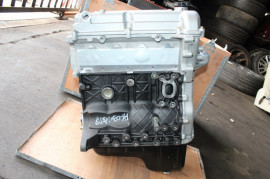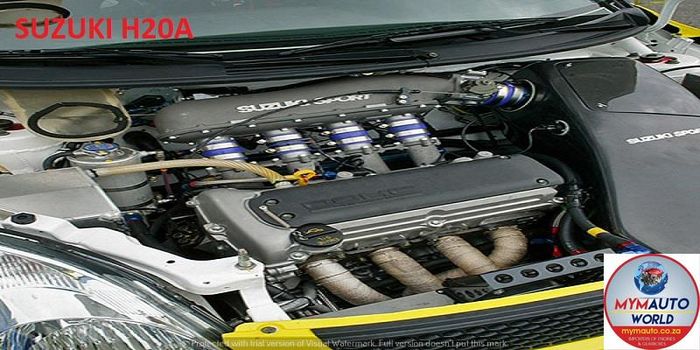Economical Opel Corsa Engine Options for Your Budget
Economical Opel Corsa Engine Options for Your Budget
Blog Article
Exploring the Inner Workings of a Compact Lorry's Engine System
As motorists, we frequently consider granted the detailed processes that take place within the confines of our vehicle's engine system. The portable yet complex equipment that pushes us ahead is a wonder of engineering accuracy and sychronisation. From the controlled surges in the combustion chamber to the thorough timing of fuel shot, every component plays an essential duty in the smooth operation of the engine. In this exploration of a portable automobile's engine system, we will certainly unwind the internal workings of this mechanical harmony, clarifying the enigmas that drive us ahead on our daily trips.
Combustion Process Introduction
The burning process in a portable car's engine system is an essential mechanism that effectively transforms gas right into energy to power the lorry. This procedure occurs within the combustion chamber of the engine, where gas and air mix, ignite, and create controlled explosions. The burning procedure contains 4 major stages: intake, power, compression, and exhaust.
During the intake stage, the piston moves downward, attracting in a combination of air and fuel into the burning chamber. This descending movement creates the power needed to drive the car. This cyclic burning process is essential to the operation of a small lorry's engine system, ensuring reliable energy conversion for propulsion.
Piston and Cyndrical Tube Communication

The piston's accurate fit within the cyndrical tube is essential for maintaining optimal compression and avoiding power loss during combustion. Limited clearances in between the piston and cylinder wall surfaces make certain reliable sealing, allowing the piston to relocate efficiently without permitting gases to leakage past. Correct lubrication is likewise important to decrease friction and use in between these components, improving long life and efficiency.
Furthermore, the style and materials used in manufacturing the piston and cyndrical tube impact engine effectiveness and longevity. Modern engines frequently utilize light-weight yet sturdy materials like light weight aluminum alloys for pistons and cyndrical tube liners to decrease inertia and improve thermal performance. Overall, the harmonious interaction between the piston and cyndrical tube is essential to the engine's performance and overall performance.
Gas Shot System Performance
Gas shot systems in compact vehicle engines play an important role in precisely delivering gas to the combustion chamber for efficient and regulated ignition. The fuel shot system functions by infusing gas right into the burning chamber at the optimum minute throughout the engine's operation (opel corsa engine). This accurate timing ensures that the gas mixes evenly with the air for correct burning, resulting in improved gas efficiency and decreased emissions
There are mostly two sorts of gas injection systems used in portable vehicle Source engines: port fuel injection (PFI) and straight gas injection (DFI) PFI systems infuse gas right into the intake port before the consumption shutoff, while DFI systems inject fuel straight into the combustion chamber. Both systems have their advantages, with DFI using much better fuel atomization and PFI offering a more cost-effective remedy.
Recognizing Engine Cooling Systems
Effective procedure of a compact car's engine counts greatly on the efficiency of its cooling view it now mechanisms. The cooling system in a compact vehicle normally consists of a number of parts working together to manage the engine temperature. Comprehending these engine cooling mechanisms is crucial for keeping the efficiency and longevity of a portable vehicle's engine system.

Exhaust System Elements Explained
The optimal performance of a compact automobile's engine air conditioning mechanisms relies on a corresponding system referred to as the exhaust system, which comprises different crucial elements for making certain efficient discharges and engine efficiency. The exhaust system includes parts such as the exhaust manifold, catalytic converter, muffler, and tailpipe. The exhaust manifold accumulates exhaust gases from the engine's routes and cyndrical tubes them to the catalytic converter. The catalytic converter after that converts harmful toxins in the exhaust into less dangerous emissions before launching them with the muffler and tailpipe.
One essential part of the exhaust system is the oxygen sensing unit, which monitors the oxygen levels in the exhaust gases to help regulate fuel intake and guarantee optimal engine efficiency. opel corsa engine. Furthermore, the resonator might exist in some exhaust systems to minimize noise levels. On the whole, the exhaust system plays a vital function in preserving engine performance, decreasing damaging discharges, and making sure a quieter driving experience for small car proprietors

Conclusion
Finally, the portable car's engine system is a complex combination of elements that interact to help with the burning process, convert fuel right into energy, and remove waste gases. Comprehending the internal operations of the engine system, consisting of the piston and cyndrical tube interaction, fuel shot system, engine air conditioning systems, and exhaust system parts, is vital for keeping optimum performance and performance of the automobile.
The burning procedure in a compact automobile's engine system is a critical device that successfully transforms like this gas into power to power the automobile.Gas shot systems in compact car engines play a vital duty in exactly supplying fuel to the combustion chamber for reliable and regulated ignition.There are largely 2 kinds of gas injection systems utilized in small lorry engines: port fuel shot (PFI) and direct gas injection (DFI) Understanding these engine air conditioning systems is important for keeping the efficiency and longevity of a compact vehicle's engine system.
The ideal performance of a portable lorry's engine cooling systems depends on a corresponding system understood as the exhaust system, which comprises various essential parts for making sure effective emissions and engine efficiency.
Report this page